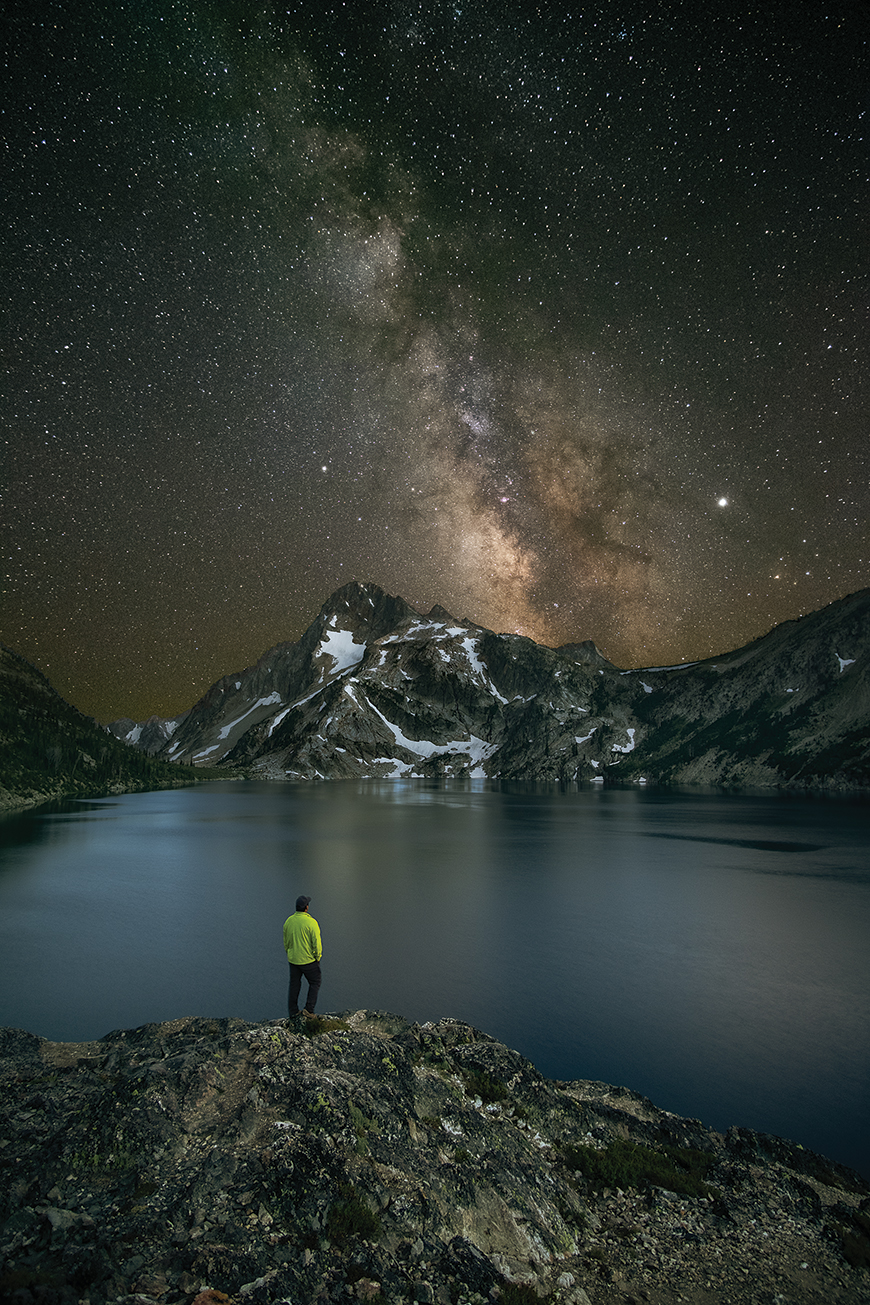Idaho is famous for nothing.
Not only is Idaho best at nothing in the U.S., but it’s world-famous for nothing. That nothing that Idaho has—or doesn’t have, in this case—is light pollution, that overnight glow from city lights that makes it difficult to see the stars. We take it for granted in Idaho that we can look up and see the stars, and even the Milky Way, but that’s not true in many places.ot only is Idaho best at nothing in the U.S., but it’s world-famous for nothing.
That’s why people took steps to preserve Idaho’s dark sky, so others can continue to enjoy looking at it.
The Central Idaho Dark Sky Reserve, formed in December 2013, is one of just 13 places in the world, said Carol Cole, a member of the reserve’s advisory group. It was designated by the International Dark Sky Association, an organization that designates such sites around the world, after the group went through a lengthy application process, she said.
The dark sky reserve is more than 900,000 acres, spreading from Sun Valley and Ketchum through the Sawtooth National Recreation Area and the Ketchum Ranger District to Stanley, Cole said.
The effort began with “dark sky ordinances” in Ketchum and Hailey, specifying the lights residents could have, to help preserve the night sky. “Stephen Pauley, a resident here in
the Wood River Valley, started working on dark sky ordinances in the 1990s,” Cole said. “That laid the groundwork that we would be able to achieve reserve status.”
Discussion started around 2014, and the group started the two-year, 120-page application process in 2016, working with the cities, Blaine County, the Forest Service, the Idaho Conservation League, and other local organizations, Cole said.
Idaho qualified for gold level, the highest status in the designation, Cole said. “Our dark skies are pretty darn dark,” she said.
Cole, who used to work for the U.S. Forest Service, said it was the first large-scale effort by the Forest Service at the time, though some parks had been designated “dark sky parks.”
Part of the effort involved lighting inventories in Ketchum and Sun Valley and along Highway 75, Cole said. And the group needed to work with concerns from citizens. “We had 50 different versions of a map before we landed on the final one,” she said, including moving some boundaries a little farther from private land and adding other areas that people wanted.
The group doesn’t have enforcement authority but works with landowners based on complaints, Cole said.
Cole can’t quantify the response but said it was considerable. “Astrotourism is a big draw these days,” especially after the 2017 total solar eclipse that went across Idaho. “That really heightened people’s interest in looking up at the sky.” She gets questions from all over the country from people who want to plan a vacation, including parents who want their kids to have the opportunity to see the night sky.
The region has seen significant media attention nationally from the creation of the reserve, said Angenie McCleary, vice chair of the Blaine County Board of Commissioners. “Tourists have been excited to learn about and visit another attraction in our area.”
So successful is Idaho’s Dark Sky Reserve that there’s talk of expanding it.
“A lot of Blaine County outside of the Central Idaho Dark Sky Reserve is very dark and is worthy of inclusion and protection,” McCleary said. “In particular, the south county has an incredible dark sky resource. Perhaps, this area could be included with the Craters of the Moon Dark Sky Park to create a second dark sky reserve in our area.”
Next time you’re in central Idaho, look up—and appreciate nothing.
International Dark Sky Reserves
For more information on the Central Idaho Dark Sky Reserve, visit idahodarksky.org. The organization celebrates events, typically during the summer, including hikes, “star parties”—where local astronomers give presentations and let people look through their telescopes— lectures, and parties celebrating events such as the summer solstice and the anniversary of humans visiting the Moon. The website also includes a detailed map of the area.

